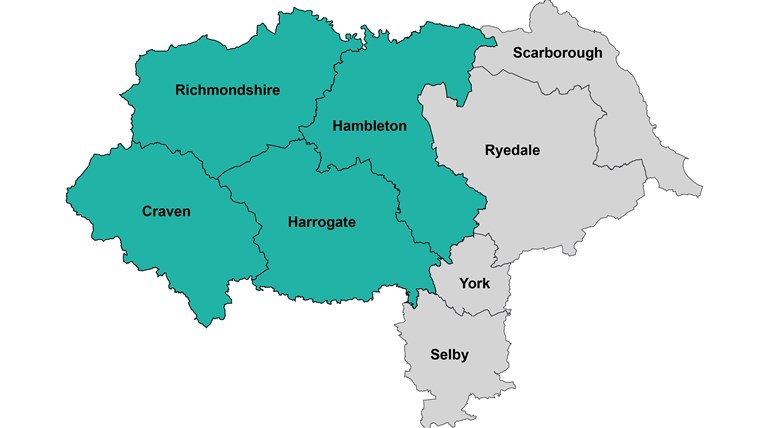Craven District Council approves submission of East & West model for local government reorganisation

Craven District Council has voted in favour of submitting an outline bid to Government showing an East & West model is the best way to reorganise local government in the region.
Councillors were presented with a KPMG research study providing compelling evidence that the creation of two unitary authorities of balanced size would provide the strongest local leadership, the most effective services and the fairest democratic representation, as well as the most savings for local taxpayers.
Members of the Council approved submission of the case for change to the Ministry of Housing, Communities and Local Government.
Councillor Richard Foster, Leader of Craven District Council, said: “The East and West model is clearly the best option for residents and businesses, if we are forced to go through local government reorganisation.
“We have consistently made the case to Government that this is not the right time for reorganisation, given the pressures of Covid-19 on our communities and our services.
“However, North Yorkshire County Council have been pursuing their ‘mega-council’ bid for reorganisation with enthusiasm, and the Government seem reluctant to delay the process, which leaves us with little choice but to submit a better alternative.
“The KPMG study clearly shows that the East and West model will provide strong local leadership, the most effective services, the fairest democratic representation, the most financial savings, and the strongest approach to unlocking devolution.
“North Yorkshire’s proposal would create a mega-council covering an area which is five and a half times the size of Greater London; it’s as big as Bedfordshire, Berkshire, Buckinghamshire, Hertfordshire and Oxfordshire combined.
“We will continue to consult with local people, businesses and partners as we finalise the case for an East and West model.”
Councils have been invited to submit an outline bid to Government by November 9, proposing how unitary authorities could be created within North Yorkshire and York.
Over the summer, experts at KPMG were commissioned to assess a range of options and propose a model for local government reform based on research and evidence.
The “East & West” model described in the study would see Craven, Harrogate, Richmondshire and Hambleton join together to form a unitary council in the West, and Selby, City of York, Ryedale and Scarborough join together to form a unitary council in the East.
According to the study, this East & West model would produce two unitary authorities with a similar population and economic size, that meet the government’s reform criteria. The East & West unitaries would provide the strongest approach to unlocking devolution – potentially worth billions to the region in investment - whilst also being the optimum size for effective strategic and local service delivery to citizens and communities. The model also offers the opportunity to improve services and efficiencies in the City of York.
All seven district and borough councils are considering the study at democratic meetings in early November before the government’s deadline for proposals. If one or more council agrees to submit the KPMG research study, it will form part of the outline bid to Government in November. Scarborough Borough Council has already voted to submit, with other authority meetings taking place on November 4 and 5.
The evidence-based model for reform is being countered by North Yorkshire County Council, which voted on Wednesday to submit a bid for a ‘mega-council’ model. This would create a unitary authority covering the whole of North Yorkshire, with a population of 618,000 while preserving the existing City of York unitary authority with a population of 211,000. This is contrary to the Government’s criteria, which sets the optimal population range for a unitary council at between 300,000 and 600,000 people.

